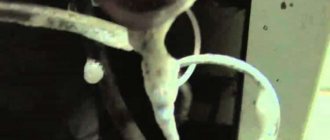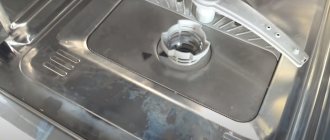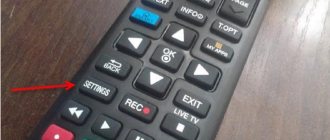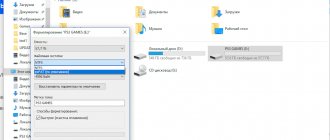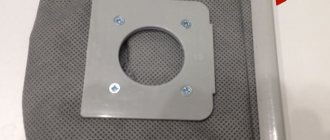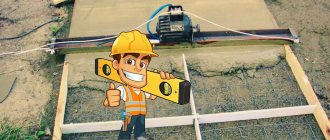Modern comfortable life is impossible without such a household device as a refrigerator. Its breakdown entails big troubles: spoiled food and preparations for the winter, and for some, financial losses, if we are talking about an industrial freezer or commercial refrigeration equipment. One of the reasons for failure is a violation of the circuit in which the cooling gas is located, i.e. a leak. To save money and refill freon yourself, you will need special tools and certain skills, but first things first.
This article is suitable for all models of Russian, Soviet and foreign production - single-, double- and triple-chamber, including built-in ones: Hotpoint Ariston, Ardo, Beko, Bosch, Candy, Daewoo , Electrolux / Electrolux, Gorenje / Gorenje), Haier / Hayer, Hansa / Hansa, Hitachi / Hitachi, Indesit / Indesit, LG / ElDzhi, Liebherr / Liebherr, Polair / Polar, Pozis / Pozis, Samsung / Samsung, Sharp / Sharp, Shivaki / Shivaki, Siemens / Siemens, Snaige / Snow, Stinol / Stinol, Toshiba / Toshiba, Vestel / Vestel, Vestfrost / Westfrost, Whirlpool / Whirlpool, Zanussi / Zanussi, Elenberg / Elenberg, as well as Nord, Biryusa, Yuryuzan, Atlant, Oka Sviyaga, Ocean, Minsk and Don.
To start
Any refrigerator is subject to breakdown: regardless of brand, model or price category. But the price of repairs varies significantly, and can be quite high for famous manufacturers. In this regard, I would like to try to repair the unit at home. Let's look at the nuances of refilling the refrigerator with freon if it comes out and runs out.
Safety regulations
Injecting freon yourself is a dangerous activity, as it can cause harm to the human body, and it is necessary to approach it with all responsibility:
- Study the accompanying documentation for the refrigerator.
- Disconnect the device from the power supply;
- During the gas replacement process, you should not smoke or use heating devices, as it is flammable;
- All repair equipment must be grounded;
- Do not neglect fire safety rules when soldering elements;
- Refrigerant vapors are hazardous to health (it can lead to poisoning), so the room should not be isolated, and after the procedure it is necessary to ventilate for 15 minutes;
- Use gas only from trusted manufacturers who provide a guarantee.
Materials and equipment
To independently pump gas into the refrigeration system, you need special equipment and spare parts. You can rent a tool from one of the workshops, because purchasing it for a single repair is unprofitable.
What will you need:
- Vacuum pumping station;
- Scales;
- Refrigerant of a certain brand;
- Welding and soldering of a certain type, depending on the type of pipe;
- Filter drier;
- Schrader valve;
- Leak detector for checking joints for leaks.
- Nitrogen cylinder for purging the cooling circuit.
- Needle grip.
Frequently asked questions from users of refrigerators running on freon
- What does freon smell and look like in the refrigerator? This substance is colorless and has no distinct odor. Since most of the time it remains in a gaseous state, the leakage of the substance can only be noticed by the degree of efficiency of the refrigerator.
- Is refrigerant dangerous for humans? Modern freons are non-toxic and safe for humans and the environment. There is a very small amount of the substance in the refrigerator. However, you need to be careful when handling the gas cylinder - here it is in large quantities and under pressure. Do not place it near flammable objects, throw it, or bring it from the cold into a warm room.
Stages of work
The work of charging refrigerant is quite complex, and you should know exactly its stages.
- Find and pinpoint the location of the leak;
- Isolate the leak;
- Replace filter drier;
- Check for tightness;
- Carry out vacuum;
- Fill the system;
- Check the quality of the work performed.
Preparation
Carry out diagnostics: carefully inspect the refrigerator. Some types of leaks can be identified by external signs: swelling, rust, smudges on the tubes. If it is difficult to do this visually, then use a match finder. Assess whether you can repair the damage yourself (especially if the leak is in a foamed area) or whether you will still need to seek the help of a specialist.
Removing residual refrigerant
Observing safety precautions, release the remaining gas. Using a needle grip, pinch the filter drier and poke a hole where the copper is visible. The tube can be taken out through the window to protect yourself. Do not forget that it is explosive and very harmful to health.
After eliminating the leak and removing the remaining gas, replace the filter drier - this will protect the system from moisture penetration. They simply cut it off and solder a new one.
Check the tightness of the cooling circuit: constantly monitor the pressure gauge and inject nitrogen - this will determine how well the pressure is maintained in the system. After this, bleed the gas and perform a vacuum to remove air and remaining moisture. To do this, connect the pump to the Schrader valve. The pressure in it must be at least 6 Atm.
Do-it-yourself freon injection
Select the gas that matches your household appliance. The most common and widely used 6 brands are R 600 a, R 134 a, R 12, R 22, R 407 C, R 410 A. The brand and dosage can be found in the technical service passport.
To refill freon when there is a shortage of it, you must:
- Close all gas station taps;
- Install the left pipe of the vacuum pumping station onto the Schrader valve, the right pipe to the pump, and the middle pipe to the gas cylinder;
- Open the filling station tap and turn on the pump - achieve a pressure drop to a minimum;
- Close the right valve and open the filling valve until the full volume is reached;
- Turn on the refrigerator and check the pressure;
- Clamp the compressor pipe and solder the ends;
The role of freon in the operation of a refrigerator
If the compressor is considered by some to be the heart of the refrigerator, then the refrigerant can be considered its blood. Without a sufficient amount of this substance, no refrigeration equipment will be able to operate. The colorless and odorless gas is necessary to transport thermal energy.
Freon easily passes from liquid to gaseous state at relatively low temperatures. The circuit through which it circulates consists of two parts: internal and external.
The liquid refrigerant enters the internal circuit of the refrigerator and absorbs particles of thermal energy dissipated in the air, turning into gas. It then moves to the external circuit, passes through the compressor and evaporator, transfers heat to the surrounding air and returns to liquid form.
The cycle repeats again and again, as a result, the air in the refrigerator chamber becomes colder, and the grille on the back wall constantly releases heat.
To refill the refrigerator with freon, you will need a filling station, a set of special tools and materials, as well as a refrigerant cylinder
These properties of freon are also used in other devices, such as air conditioners, heat pumps, etc. Gas circulates through a hermetically sealed circuit. It does not pose a great danger to human health even if the substance completely leaks from an ordinary household refrigerator.
In total, 16 types of these saturated fluorinated hydrocarbons are used in industry. A specific brand of freon is suitable for refilling a specific refrigerator model; it is usually indicated directly on the compressor housing.
Problems encountered during the process
Violation of the filling technology can lead to complete failure of the unit.
What to watch out for:
- Moisture in the cooling circuit. If you have not paid enough attention to drying, and moisture remains in the circuit, this will lead to failure of the compressor valves or even short circuit of the windings. In this case, it is better to “over-dry”, because poor-quality drying is no longer possible to correct.
- Excess gas. An excess amount of gas leads to blockage of the evaporator channels, which, in turn, increases the pressure, reducing the free volume for boiling, and the device stops turning off. This leads to excessive load on the compressor and its failure.
Diagnosing the problem
The very first step is to find the location of the leak. A visual inspection will help determine. We have already mentioned above the elements that deserve special attention. Corrosion that occurs on the tubes when moisture is released will also indicate the presence of problems.
If a normal inspection does not produce results, then you can resort to the old method of treating with a soap solution and applying pressure. It is applied to the tubes, joints, and then nitrogen is supplied to the system. Bubbles will appear in areas of depressurization.
There is also a special tool - a leak detector. As a rule, it is designed for a specific refrigerant composition, so it may not show the location of the leak if it does not match.
Important! Weaknesses should be looked for both before and after downloading. This will prevent the problem from recurring in the future.
See alsoDecorating a bottle of cognac for a man with his own hands for his birthday and February 23
Theory
Why do you need freon
The most important element in the technical component of refrigeration equipment is gas, designed to maintain low temperatures and freeze food. Without this component, the unit loses its functionality.
It is worth remembering that the refrigerant is odorless, and therefore the presence of problems in the cooling system and evaporation can only be judged by the temperature inside the unit.
It is also fire hazardous and poisonous. Be sure to ventilate the room after work.
Always use only the brand that is suitable for your unit.
Reasons for depressurization
The main factors causing depressurization of refrigeration equipment:
- Natural wear and tear of elements from old age;
- Blockage of the capillary tube;
- Compressor failure.
How to diagnose a leak yourself
There are signs by which you can judge a leak without resorting to special equipment:
- Poor refrigeration or freezing of food in only one local location;
- Continuous operation of the compressor or with minor pauses between cycles;
- Complete shutdown of the motor-compressor;
- Strange sounds similar to gurgling.
- Emergency indication or sound signal;
- Ice or snow coat in the evaporator area;
- Rusty stains around the perimeter of the door;
- Bulging of the housing wall.
We fix 10 typical refrigerator malfunctions with our own hands
Causes of refrigerant leakage
In short, the cause of freon leakage is a leak in the refrigeration circuit. But the reasons for this situation can be very different. Accidental mechanical impact on the refrigeration circuit elements or the compressor can cause such a malfunction.
A compressor breakdown almost inevitably necessitates refilling with freon. Even if the refrigerant remains in the circuit, it will still have to be refilled when replacing a faulty element. Poor quality of the capillaries through which freon moves, or their wear, also often causes depressurization of the system.
If the connections between the individual elements of the refrigeration circuit are installed incorrectly, over time they may become loose and the refrigerant will leak out through the cracks that appear.
If the capillary tubes are contaminated due to freezing of moisture trapped inside the circuit, it is not difficult to clean them. But sometimes such blockage occurs as a result of the accumulation of contaminants from particles of burnt engine oil. The filter drier does not catch these substances; they gradually accumulate inside the narrow tubes and form an obstacle to the free circulation of the refrigerant.
If a broken compressor needs to be replaced with a new one, you will have to open the refrigeration circuit and, after replacement, pump in a new portion of freon
Although a freon leak is not observed in such a situation, in order to normalize the operation of the system, you will have to open the refrigeration circuit.
After cleaning the capillaries, you will have to restore its tightness, and then introduce a new refrigerant into the system to replace the lost one.
Before starting refueling work, the cause of the leak should be identified and eliminated. To do this, you need to inspect the circuit to understand where exactly this is happening.
To identify the location of a freon leak using a soap solution, you need to examine the condition at the joints of the tubes, as well as where traces of oil contamination are noticeable
If the inspection does not give results, you can use a soap solution. In this case, air is supplied to the system under low pressure.
A soap solution is applied to the surface of the tubes, joints, etc. It will bubble where there are leaks. It is impractical and unsafe to process the entire contour in this way.
It will be easier to first check the weakest and most suspicious areas: joints, as well as areas where there are traces of contamination with technical oils.
To accurately determine the point of circuit damage and refrigerant leakage, a leak detector is used - a device that reacts to a specific brand of freon
If the soap solution does not produce results, you should use a leak detector or invite an experienced technician to determine the location of the refrigerant leak. This is not a universal tool; a specific device is usually configured to respond only to a certain brand of refrigerant.
It can be used to identify leaks not only before eliminating them, but also after completing the filling of the circuit, in order to ensure that the quality of the operations performed is sufficiently high.
If you don't do this, you may miss some defect. Poor quality repairs will appear in about two weeks, and all work will have to be done again.
In addition to eliminating leaks, it doesn’t hurt to also check the functioning of other elements of the system. An insufficient amount of freon often leads to increased wear of individual parts. If the reasons that cause leakage are not eliminated, very soon you will have to start repairs again, pump in refrigerant, etc.
Question answer
How to determine the excess amount of freon and release it
Turn on the device and leave it for an hour, then check the condition of the cooling circuit. If the capillary tube and filter are hot, and the return tube is covered with frost, this indicates an excess of refrigerant. Lower it to the required pressure - this information is indicated in the data sheet of the household appliance. Repeat the procedure. Normally, the return pipe should freeze no more than 10 cm from the exit from the refrigerator body.
How much refrigerant is in the system
Each brand of refrigerator has its own amount of gas required for proper operation. On average, these values range from 30 to 70 grams. Do not exceed the required level of freon. You should also adhere to the brand specified in the technical specifications for your device.
Is it possible to turn on equipment without refrigerant?
You cannot turn on the unit without cooling gas, as this will lead to failure of the motor-compressor, and equipment repair will not only become more complicated, but also more expensive.
20 solutions if the refrigerator does not cool or freeze
Freon poisoning
A freon leak in a household refrigerator cannot cause poisoning and, if detected in a timely manner, does not harm the unit itself.
Freon is dangerous only in large quantities, therefore the risk of gas poisoning is increased for people working in cold storage plants, especially if the ventilation system is broken. The consequences of such intoxication are reversible, but quite dangerous, so you need to pay attention to the following symptoms:
- state of alcohol or drug intoxication;
- spots before the eyes;
- convulsions;
- allergic reactions;
- nervous excitement;
- confusion;
- irritation of mucous membranes;
- 1st and 2nd degree skin burns.
Attention! The severity of the victim’s condition directly depends on the number of chlorine atoms in a particular freon. In mild cases, dizziness and headaches appear, and in severe cases, pulmonary edema is possible, which can result in death.
Freon - belongs to a group of substances that require special rules when working with them. It is impossible to ignore such instructions, especially in large production. If a substance is contained in large quantities it is dangerous. At the first suspicion of intoxication, you should seek medical help and undergo treatment.
Preparing for work, selecting the necessary tools
The refrigerator compressor works with a specific brand of freon. All data can be read on its body. The manufacturer indicates the required amount of refrigerant.
Important! You can only work with a specific brand of freon. It is prohibited to use other brands of gas.
To carry out repair work, you need to prepare the following set of tools:
- leak detector;
- tester;
- Vacuum pump;
- pliers;
- pliers;
- vice;
- Schrader valve;
- set of wrenches.
To engage in gas-flame work, you must use a protective screen.
Advice! Since the equipment is very expensive, it can be rented for a short period. The purchase will cost much more than repairing the unit in a workshop.
Before you start filling the refrigerator, you need to carry out several preparatory operations. Remaining refrigerant must be removed from the evaporator. To clean the system and remove gas, you need to perform certain actions:
- the filter is fixed in a vice;
- the copper section is pierced;
- a new part is installed;
- pressure is released;
- nitrogen purging is carried out (moisture is removed);
- The Schrader valve is installed.
To maintain clean air, gas can be removed from the room through an open window. To do this, you can use a flexible tube.
Attention! The cylinder must have a pressure not exceeding six atmospheres. To reduce it, it is allowed to use a special gearbox.
Removing remaining refrigerant
Before refilling, you will need to completely remove the remaining freon from the system. You need to find a filter drier - it is usually located in close proximity to the compressor. Using a needle gripper, a hole is made in the copper section of the element. After the work is completed, you will need to supply a new spare part to replace the damaged one.
The next step is to unsolder the circuit and prepare the place for installing the valve. To do this, it is removed from the fitting, the excess length is cut off, and then soldered onto the compressor. After removing the remaining freon, it is necessary to purge the system using a nitrogen supply.
Note! The nitrogen supply pressure should not exceed 6 atmospheres. If a different value is indicated on the cylinder, a reducer is used to reduce this indicator.
When refueling, special attention should be paid to the nitrogen supply pressure.
Blowing is carried out for 10-15 minutes to achieve the desired effect. Afterwards, the valve on the needle gripper is closed and the filter is cut. Then the purging procedure is repeated. Only after this is a new element installed.
Do not leave the system open for a long time. If left for a long time without a vacuum, the circuit may suffer internal damage, after which a complete replacement will be required.
See alsoHow to decorate a glass balcony
